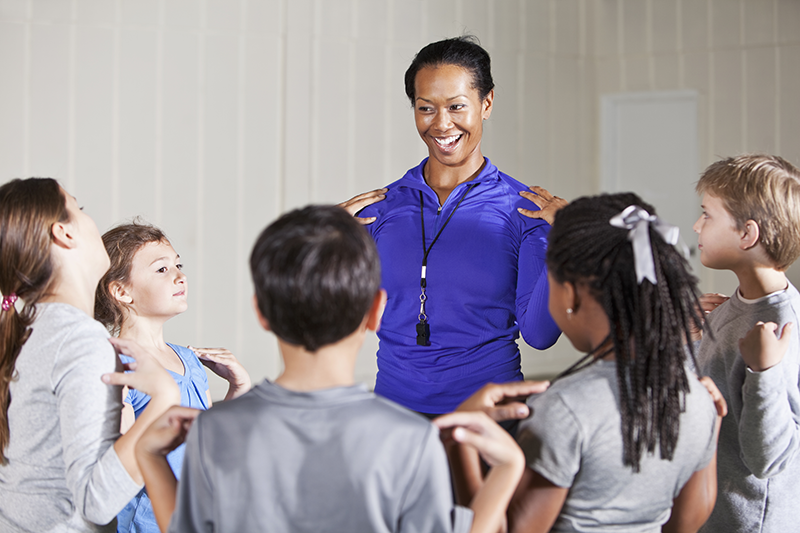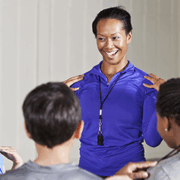Five Actions to Transform Your Community Sport Program: A Practical Guide

Community sport is the heartbeat of Canadian communities. With over 30,000 sport and recreation organizations nationwide—95% of which operate at the community level—these programs shape the experiences of countless children and adults. Despite their tremendous positive impact, challenges remain: high dropout rates persist, and participation is consistently lowest among lower-income families and other marginalized groups.
Quality Sport offers a better way. Based on Long-Term Development principles, this approach focuses on athlete growth and development, supports long-term goals, and uses competition intentionally for development. It creates a framework that delivers good programs by good people in good places.
This article outlines five key actions community sport organizations can take to implement Quality Sport and transform their programs.
Action 1: Focus on Athlete Growth and Development
At the core of Quality Sport is the recognition that children and youth should not be treated as small adults. Their sport programs and competitions must match their stage of growth and maturity.
What this looks like in practice:
- Programs that develop fundamental movement skills, not just sport-specific skills
- Activities that allow participants to build on existing skills
- Options for participants to adjust challenge levels based on their abilities
- Grouping by ability, age, size, and maturity—not just chronological age
- Well-prepared programs with seasonal and annual plans
- Modified equipment, facilities, and rules for different developmental stages
Implementation steps:
- Ensure coaches understand Long-Term Development principles through proper training
- Provide coach, official, and parent education on your sport’s Long-Term Development approach
- Share a skills checklist showing what participants will develop and how
- Offer development programs approved by your National Sport Organization
- Use assessment tools to measure and track participant progress
- Consider recognition for “most improved” participants rather than just “best performers”
Who can help: Municipal recreation departments can support volunteer training, link facility use to Long-Term Development recommendations, and promote Quality Sport through community communications. Provincial/Territorial Sport Organizations can integrate quality standards into membership policies, restructure competitions to focus on skill development, and share proven practices.
Action 2: Supporting Long-Term Goals
Quality Sport never focuses solely on today. Recreational programs build future activity habits, health, and social connections, while competitive programs carefully advance athletes along pathways in their sport careers.
What this looks like in practice:
- Equal play and practice time for all participants in early stages
- Programs that connect participants to other appropriate opportunities
- Placing participants in parallel or developmental programs rather than cutting them
- Coaches who assess abilities and interests to guide participants toward appropriate paths
Implementation steps:
- Explain your long-term approach in orientations and communications
- Draw on Long-Term Development resources for coaches and leaders
- Emphasize personal development goals over winning, especially for female participants
- Consider bio-banding to group participants by developmental age rather than chronological age
- Use development checkmarks and track progress across multiple years
- Make development records portable when members move to other sports
Who can help: Municipal recreation programs can support volunteer training, promote multisport participation, and coordinate sport schedules to reduce conflicts. Provincial/Territorial Sport Organizations can integrate quality standards, develop stage-by-stage skill progressions, and use development-based groupings in competitions.
Action 3: Using Competition Intentionally for Development
Competition is central to sport, but it should be more than just determining “who is best on the day.” When used intentionally, competition becomes a learning opportunity—a chance to test skills, try tactics, or model upcoming events.
What this looks like in practice:
- Modified formats based on participant development (small-sided games, shorter distances)
- Rules adapted to participant ability and stage
- Balanced teams/groups so participants compete against others of similar ability
- Opportunities for participants to play different positions or try different events
- Leaders who emphasize skill development over winning
Implementation steps:
- Educate parents about the benefits of meaningful competition
- Support coaches to learn about early specialization risks
- Provide resources about managing injury and concussion
- Analyze competition results to identify mismatches and modify formats accordingly
- Track injuries and ensure safe return-to-play processes
- Adopt policies ensuring equitable playing time and positional rotation
Who can help: Municipal recreation departments can support training in injury management, make safety policies mandatory for facility rentals, and work with sport groups to understand evolving facility needs. Provincial/Territorial Sport Organizations can review and restructure competitions, coordinate schedules with other sports, and implement mandatory safety policies.
Action 4: A Commitment to Sport for All
Quality Sport must be accessible to everyone, including traditionally marginalized groups like girls and women, individuals with disabilities, Indigenous Peoples, newcomers to Canada, the LGBTQI2S community, and those living in poverty or isolated communities.
What this looks like in practice:
- Active engagement of all participants in activities
- Consideration of all aspects of participation (mental, physical, cultural, spiritual)
- Modified facilities, equipment, and rules for different abilities
- Trained and qualified coaches who follow child protection policies
- Affordable and barrier-free access
- Safe, welcoming environments where everyone feels they belong
Implementation steps:
- Utilize education and training programs from Multi-Sport Service Organizations
- Audit your programs and facilities for accessibility
- Develop a phased approach—take a new step toward inclusivity each season
- Collaborate with municipal recreation departments and social agencies
- Promote parent and spectator codes of conduct
- Work with charities like KidSport and Canadian Tire JumpStart to help lower-income families
Who can help: Municipal recreation departments can advocate for barrier-free facility access, maintain opportunities for low-cost unstructured play, and showcase inclusive programs. Provincial/Territorial Sport Organizations can develop parent education initiatives, create partnerships with disability sport organizations, and share respectful behaviour policies.
Action 5: Partnerships that Prioritize Development Needs
Community sport organizations need strong partnerships to thrive. These relationships—with Provincial/Territorial Sport Organizations, municipalities, granting agencies, sponsors, and media—should intentionally put participant development first.
What this looks like in practice:
- Programs aligned with National Sport Organization frameworks
- Collaboration between sport and recreation for smooth transitions
- Leaders who regularly assess and improve governance
- Coaches who mentor and build capacity for future leaders
- Organizations that seek partners to advance Quality Sport
- Use of sport for social change and community development
Implementation steps:
- Participate in working groups to advance system alignment
- Meet with municipal recreation staff to discuss partnership opportunities
- Explore joint-use agreements with municipalities and school boards
- Support creation of a community sport council
- Budget for coach and leader education and development
- Check your strategic plan to ensure it includes Quality Sport principles
Who can help: Municipal recreation departments can convene Quality Sport meetings with local groups, facilitate a community sport plan, and identify grants and resources. Provincial/Territorial Sport Organizations can share funding opportunities and model collaborative partnerships.
Conclusion
Quality Sport based on Long-Term Development is built on four guiding principles: quality is key, optimal programming is critical, inclusion is non-negotiable, and collaboration makes the system better.
By implementing these five key actions, community sport organizations can transform their programs to deliver experiences that develop participants for both sport success and lifelong engagement. The result is a stronger, more inclusive sport system that truly serves the needs of all Canadians.
Remember that a community club may be small individually, but collectively, community sport is mighty. Working together, we can ensure that every Canadian has a Quality Sports experience.
Learn More
This article provides an overview of the key concepts in Quality Sport, but there’s much more to explore. For a comprehensive guide to Quality Sport delivery based on Long-Term Development principles, download the full Quality Sport for Communities and Clubs resource. The complete publication includes detailed checklists, additional implementation strategies, and examples of promising practices from across Canada that can help your organization deliver the best possible sport experience to all participants.

